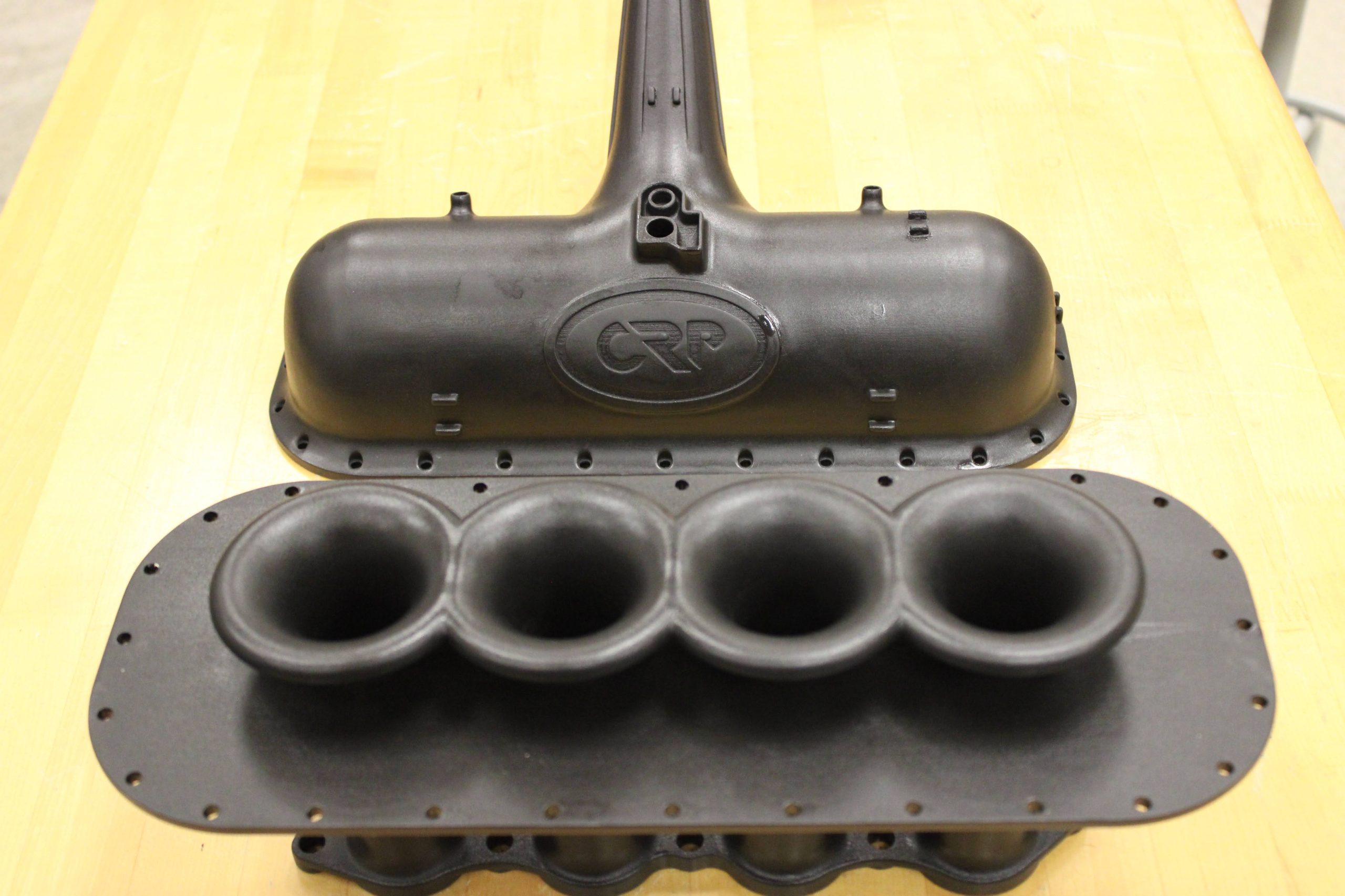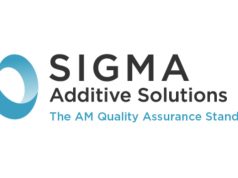The CRP USA and UVic Formula Racing partnership have created across the years many functional parts in Carbon fiber filled composite materials and Laser Sintering as manufacturing process. These components distinguish for versatility, mechanical properties and durability
The versatility and mechanical properties of the functional components made in Windform materials are well recognized by specialists and insiders. One of the latest examples comes from the world of Formula SAE.
Luke Wooldridge, Powertrain Lead of UVic Formula Racing from University of Victoria, says, “like every years the industry judges at the competition were very interested in the parts that CRP USA 3D printed for our racing car.”
The partnership between CRP USA and UVic Formula Racing has been going on for some time now and has involved the manufacturing and featuring of several components, including the steering wheel and elements of the engine lubrication system, which have become integral parts of the car. Let’s have a deep dive into these parts.
Oil and water catch cans
The team designed new oil and water catch cans which integrated better with the chassis packaging.
These components were made from Windform SP, one of the Carbon fiber filled composite from the Windform range of materials for professional 3D printing.
The Windform SP held up especially well to the high heat of the overflowing oil and coolant. Luke Wooldridge states, “No significant damage was noted to either modules with water coolant temperature reaching ~125C and the oil reaching ~150C.”
Steering wheel
This year the team had a new faceplate made for their steering wheel, for use with improved driver control switches. The part was made using Windform XT 2.0, another Carbon fiber filled composite from the Windform range.
Luke Wooldridge adds, “Windform XT 2.0 provided a better finished part as none of the in-house prints we made could provide the resistance to heat, impact, and direct sunlight needed from the part.”
3D printed parts from previous years featuring on the current car
Continuing in the powertrain system of the car, CRP USA has helped the UVic team develop a number of iterations of their oil pan over the last years, each made from Windform SP due to its impact resistance and resistance to high temperatures.
“The flexibility in the manufacturing process has allowed us to design a reduction in the overall height of the oil pan and incorporate anti-sloshing features such as one-way baffle doors directly into the print”, Luke Wooldridge states.
Reducing the overall height allows the team to drop the engine’s position in the chassis, lowering the weight distribution of the car and improving on-track, dynamic performance.
In addition, CRP USA also 3D-printed a custom oil pick-up to go with the oil pan design, once again made from Windform SP.
Regarding the steering wheel, Luke Wooldridge says, “In our controls system, CRP USA has helped immensely with the steering wheel, and it has become a centerpiece of our car, especially at showcases where we can pass around the wheel and give everyone a hands-on experience.”
The main body of the steering wheel is Windform XT 2.0, while the hand grips were manufactured from Windform RL, the thermoplastic elastomer from the Windform range of materials.
UVic Formula Racing’s aerodynamics system uses front wing inserts printed in Windform XT 2.0. These inserts act as a transition from the central wing element to the two outer ones while also providing the attachment points for the front wing onto the chassis.
Intake
The intake the UVic team ran was manufactured through CRP USA out of Windform XT 2.0 back in 2019. The intake has held up incredibly well since then, lasting the team 4 seasons.
Luke adds, “During our competition, we had engine block temperatures reaching up to 125 C and we experienced no warping or deformation at the mating surface between the cylinder head and intake. This thermal stability is critical to the reliability of our car as any deformation at this surface could lead to a catastrophic intake leak which would put us out of the race.”
The UVic Formula Racing team recently redesigned the intake to be larger and have a more optimized geometry for airflow into the engine. This new intake was made again from the Windform XT 2.0 composite.
Discussing some of the engineering characteristics of the new intake design, Luke says, “Thanks to manufacturing capabilities of CRP USA, we were able increase the overall size drastically, from a volume of 1.41L to 4.24L, while still having the print resolution necessary to print sealing surfaces and sensor mounting directly into our intake without the need for post-machining . The larger intake allowed us to transition from bent to straight intake runners improving the simulated efficiency of our air flow by 100%.”
It is planned to have the new intake up and running in the next few weeks.
Conclusion
Luke Wooldridge emphasizes, “The durability of all the components 3D-printed by CRP USA is incredible. In all honesty, we ask a lot of these parts when we are out on the track, and they continue to deliver. For example, this year, during testing, we struck a traffic cone hard enough to shear off the screw attaching the front wing to the chassis and bend our aluminum mounting arm without damaging the wing insert in Windform XT 2.0 attached to the other side.”
Subscribe to our Newsletter
3DPresso is a weekly newsletter that links to the most exciting global stories from the 3D printing and additive manufacturing industry.





















